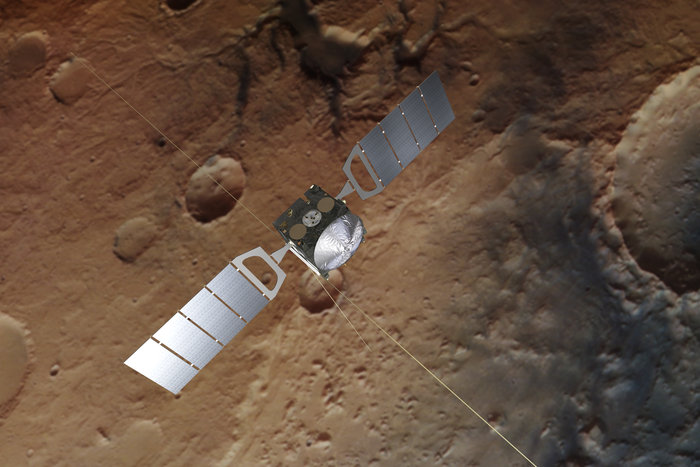
A new piece of the puzzle of the disappearing methane on Mars has been revealed. Data collected from orbit by the European Space Agency (ESA)’s Mars Express mission has been examined to look for correlations with data collected from the surface by the Curiosity rover.
Previously, the Curiosity data had indicated that methane was present in the Martian atmosphere, but this methane wasn’t detected by the Mars Express. Now a reanalysis of the satellite data shows that methane was present at just one location one day after the Curiosity’s readings were taken.
The analysis used a new observational technique which collected several hundred measures in a short time period. This technique is more accurate than previous techniques and which was able to pinpoint just 15 parts of methane per billion by volume of the atmosphere.
Although the Mars Express and Curiosity data sets now seem to concord more than they did before, the source of the detected methane is still a mystery.
“Our new Mars Express data, taken one day after Curiosity’s recording, change the interpretation of where the methane originated from, especially when considering global atmospheric circulation patterns together with the local geology,” Marco Giuranna from the National Institute for Astrophysics, Institute for Space Astrophysics and Planetology in Rome, Italy, and lead author of the paper, said in a statement.
Scientists believe the methane could have been trapped in ice below the Martian surface and risen up through tectonic faults. Alternatively, meteorite impacts could have have caused cracks which released gas that was beneath the surface.

Overall, the current evidence suggests that methane is present on Mars due to occasional geological events which release small amounts of the gas that were trapped beneath the surface, possibly thousands of years ago. It seems that methane is not, as some had considered, constantly replenished across the planet. So Mars may once have been habitable, but it seems increasingly unlikely that there is life there now.
More information on this topic is expected to be gathered by the Trace Gas Orbiter craft, part of the ExoMars mission, which is currently collecting data on the composition of the Martian atmosphere and which may reveal more about where this mysterious methane comes from.
The findings are publish in Nature Geoscience.



